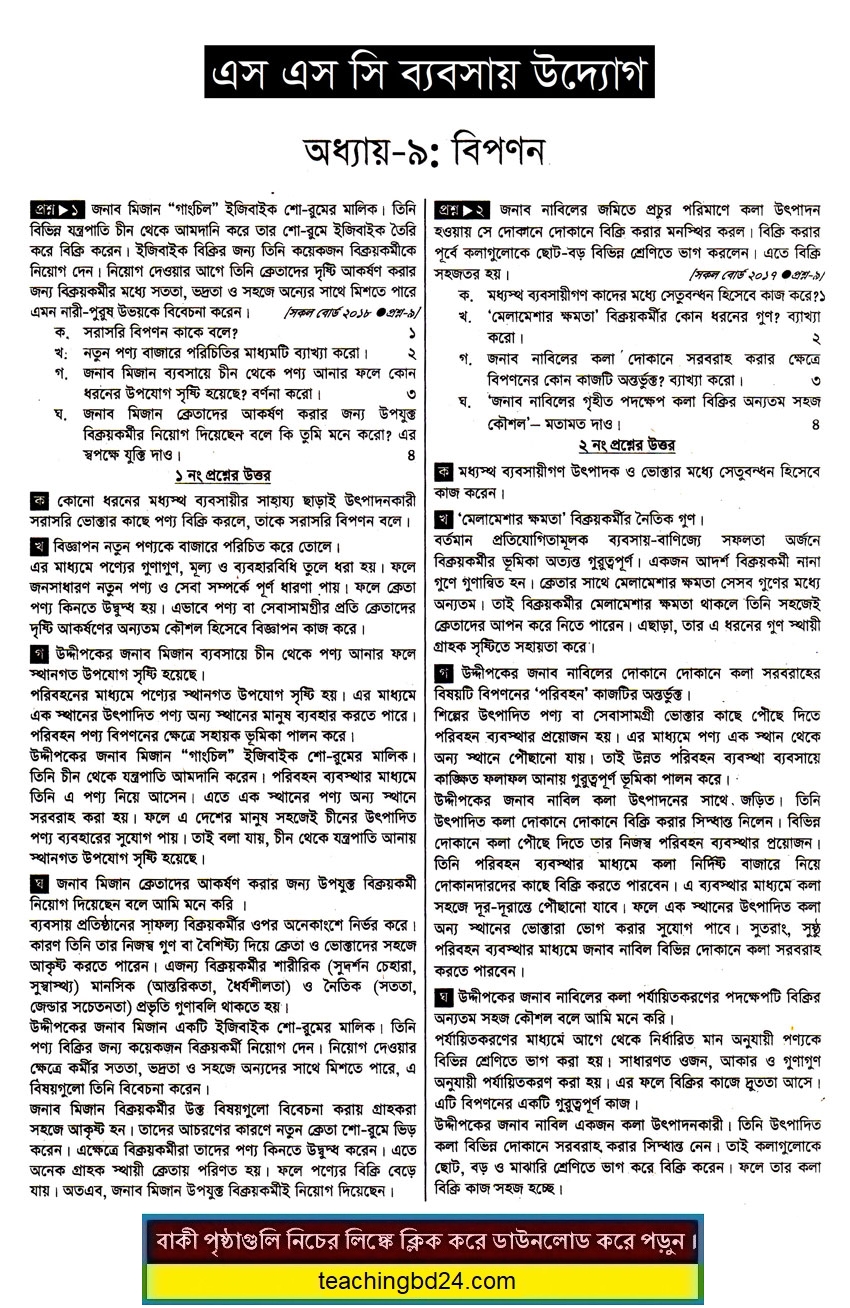Chapter 9. Marketing. Rasulpur village raphina tenth-grade students. His father was a well-known vegetable farmer in the area. His own land Okra, tomatoes, beans, pumpkin, sweet pumpkin different types of vegetables are cultivated. When the vegetables are in the field of view is quite nice. When vegetables exposed to sale in the village to buy some vegetables from there Took. He, like the rest of the vegetables and wash-off of the market to adjust a nice big basket. Vegetables He spoke, he noticed that is not broken. Raphina gets the chance and on the day of his father’s vegetable gardening and vegetables help extraction. Around the village, people prefer to buy vegetables. He is proud of his father’s reputation.
Chapter 9. Marketing


Common sense products to market products or services of commercial activity. The marketing concept is a real sense of what u š more comprehensive. Producers of commodity products or services offered to the consumer or to the user until all the work is considered in marketing or marketing. The purchase, sale, transportation, storage, standardization is the sum of all the marketing.
Brief outline
The traditional marketing mix refers to four broad levels of marketing decisions, namely: product, price, promotion, and place.
Product
The product aspects of marketing deal with the specifications of the actual goods or services, and how it relates to the end-user’s needs and wants. The product element consists of product design, new product innovation, branding, packaging, labeling. The scope of a product generally includes supporting elements such as warranties, guarantees, and support. Branding, a key aspect of product management, refers to the various methods of communicating a brand identity for the product, brand, or company.
Pricing
This refers to the process of setting a price for a product, including discounts. The price need not be monetary; it can simply be what is exchanged for the product or services, e.g. time, energy, or attention or any sacrifices consumers make in order to acquire a product or service. The price is the cost that a consumer pays for a product—monetary or not. Methods of setting prices are in the domain of pricing science.
Place (or distribution)
This refers to how the product gets to the customer; the distribution channels and intermediaries such as wholesalers and retailers who enable customers to access products or services in a convenient manner. This third P has also sometimes been called Place or Placement, referring to the channel by which a product or service is sold (e.g. online vs. retail), which geographic region or industry, to which segment (young adults, families, business people), etc. also referring to how the environment in which the product is sold in can affect sales.
Promotion
This includes all aspects of marketing communications; advertising, sales promotion, including promotional education, public relations, personal selling, product placement, branded entertainment, event marketing, trade shows, and exhibitions. This fourth P is focused on providing a message to get a response from consumers. The message is designed to persuade or tell a story to create awareness.
Criticisms
In Riding the Waves of Change (Jossey-Bass, 1988), Morgan suggests that one of the greatest limitations of the 4 Ps approach “is that it unconsciously emphasizes the inside–out view (looking from the company outwards), whereas the essence of marketing should be the outside-in approach.” An inside-out approach is the traditional planning approach where the organization identifies its desired goals and objectives, which are often based around what has always been done. Marketing’s task then becomes one of “selling” the organization’s products and messages to the “outside” or external stakeholders.[36] In contrast, an outside-in approach first seeks to understand the needs and wants of the consumer.
From a model-building perspective, the 4 Ps has attracted a number of criticisms. Well-designed models should exhibit clearly defined categories that are mutually exclusive, with no overlap. Yet, the 4 Ps model has extensive overlapping problems. Several authors stress the hybrid nature of the fourth P, mentioning the presence of two important dimensions, “communication” (general and informative communications such as public relations and corporate communications) and “promotion” (persuasive communications such as advertising and direct selling). Certain marketing activities, such as personal selling, may be classified as either promotion or as part of the place (i.e., distribution) element.[38] Some pricing tactics, such as promotional pricing, can be classified as price variables or promotional variables and, therefore, also exhibit some overlap.
Other important criticisms include that the marketing mix lacks a strategic framework and is, therefore, unfit to be a planning instrument, particularly when uncontrollable, external elements are an important aspect of the marketing environment.
teachingbd24.com is such a website where you would get all kinds of necessary information regarding educational notes, suggestions and questions’ patterns of school, college, and madrasahs. Particularly you will get here special notes of physics that will be immensely useful to both students and teachers. The builder of the website is Mr. Md. Shah Jamal Who has been serving for 30 years as an Asst. Professor of BAF Shaheen College. He expects that this website will meet up all the needs of Bengali version learners /students. He has requested concerned both students and teachers to spread this website home and abroad.
Discover more from Teaching BD
Subscribe to get the latest posts sent to your email.


